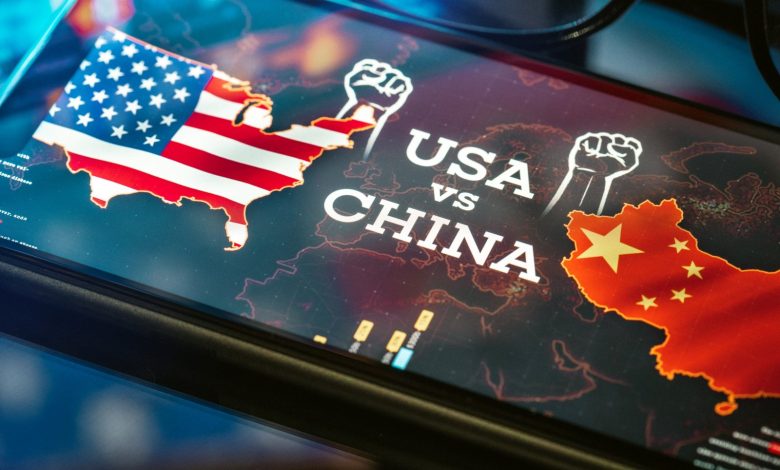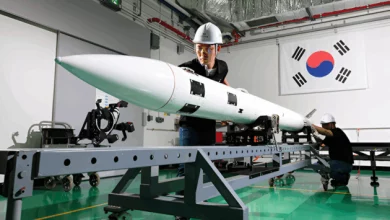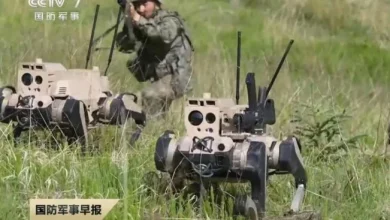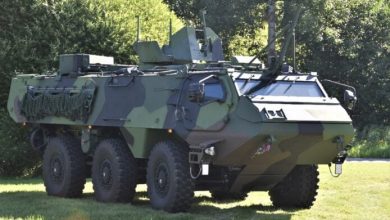Analysis: US-China spy balloon row; the military and political aspects

A Chinese balloon, suspected by some to be a ‘spy balloon,’ was recently found in U.S. airspace, sparking concerns about China’s intentions and impact on U.S. domestic politics and foreign policy
n Feb. 3, a Chinese high-altitude balloon (some experts call a spy balloon) appeared in the United States airspace and started a new discussion about Beijing in Washington’s corridors. The balloon affected U.S. domestic politics and foreign policy, which the Pentagon approached with suspicion. The main causes of the discussion are the uncertainty of China’s goals and the continued appearance of new unidentified objects in the area. This situation makes the analysis of the balloon case in question valuable.
Recent foreign policy and strategy papers announced by Washington demonstrate that China, a rising power, has begun to be accepted as a great competitor in economy, technology and warfare. It is clear that Washington perceives China’s rise as a threat to American hegemony and considers it suspicious. In this perspective, Washington’s approach is in line with the neo-classical and offensive realism assumptions. In short, this distrust caused by the rise of China is often fostered by uncertainties of what China will do in the future, despite the peaceful rise thesis of China.
Given these assumptions, it is understandable that the U.S. public and decision-makers are skeptical of the high-altitude balloon. However, examining its political and military aspects is essential to understand the reasons for this suspicion. First, why China might have used this balloon is the most crucial question sought to be answered in Washington. Despite the claims that Beijing used the balloons for meteorological activities, the U.S. suspects they were for political and military use. One of the main reasons is that the balloons in question can be used for military or intelligence purposes. This situation caused the balloon crisis to rise in the context of security.
Domestic policy actors
Another factor that will help to understand Washington’s behavior is the attitude of the actors in domestic politics. That assumption is critical to understanding Washington’s behavior. For example, since the balloon crisis occurred, the administration of U.S. President Joe Biden has faced more criticism from its opponents. Republicans, former U.S. President Donald Trump and his Secretary of State Mike Pompeo’s criticism of the Biden administration pointing out that China could not take similar initiatives during the Trump administration forced the White House to take more aggressive steps. Similarly, the fact that civilians in Montana saw the Chinese bubble spying on them and the media shared this with both domestic and international public opinion led Washington to take a step that would not shake its global position. At this point, even if the balloon’s risk is uncertain, the fact that F-22s shot it down is remarkable in terms of the reflection of the atmosphere in Washington. Another development is that Secretary of State Antony Blinken canceled his Beijing visit, and Washington expressed its concerns about China diplomatically.
At this point, the uncertainty of China’s intention to use the high-altitude balloon may have brought up different scenarios for Washington: the first possibility is that Beijing may have acted this way to test what Washington will do. It can be argued that Beijing had an opportunity to understand Washington’s decision-making and action process without resorting to military force. Second, China may have sent the message “I am watching you” to the U.S., which surrounds it and closely monitors the developments in the region. And third, although it is thought that the balloon in question is not for military purposes, it is not clear that China has such a capability.
At this point, it is necessary to examine for what purposes balloons can be used in addition to meteorological activities and the Pentagon’s strategy in this space. The use of balloons for missions like surveillance, reconnaissance and other activities dates back to the French Revolution. Balloons were used for surveillance and discovery purposes before, and they started to be used for military purposes in the framework of developing technological possibilities. It is known that the Pentagon allocates a share of the budget – 3.8 million – to use the balloons, which can fly at altitudes of 60,000-90,000 feet, for military purposes.
Crucial functions of balloons
In the budget for 2023, this sum has increased to $27.1 million. Even though they seem insignificant, balloons have significant functions in the modern world where technology is developing, and unmanned aerial vehicles and other military vehicles with artificial intelligence have crucial effects on warfare. For instance, the Covert Long-Dwell Stratospheric Architecture (COLD STAR) project, which became operational in 2019, has provided Homeland Security with critical advantages in the fight against drug trafficking in the U.S.
However, it is projected that the Pentagon can use these balloons for different purposes by integrating them with new technologies. It is evaluated that balloons can be used for various missions, such as tracking moving ground targets, improving communication, intercepting electronic signals, detecting missile threats and reducing satellite problems. In addition, according to Politico, the Pentagon uses balloons to collect and share that data with military units.
It can be said that the uncertainty over whether the Chinese administration can use high-altitude balloons for similar military purposes is the most significant dilemma faced by the Pentagon and the American decision-making actors. The fact that high-altitude balloons were seen in a region such as Montana, which hosts the 341st Missile Wing and intercontinental ballistic missile silos under the U.S. Air Force Command, seems to have increased these concerns. The U.S. administration’s diplomatic and military reactions are a response to Beijing’s possibility of testing Washington.
It can be said that the crisis that started with the high-altitude balloon also reflected the great power competition. Considering the advantages balloons provide in intelligence, data collection, surveillance and sharing this data with other units, the military impact of the above crisis will continue to be significant.





